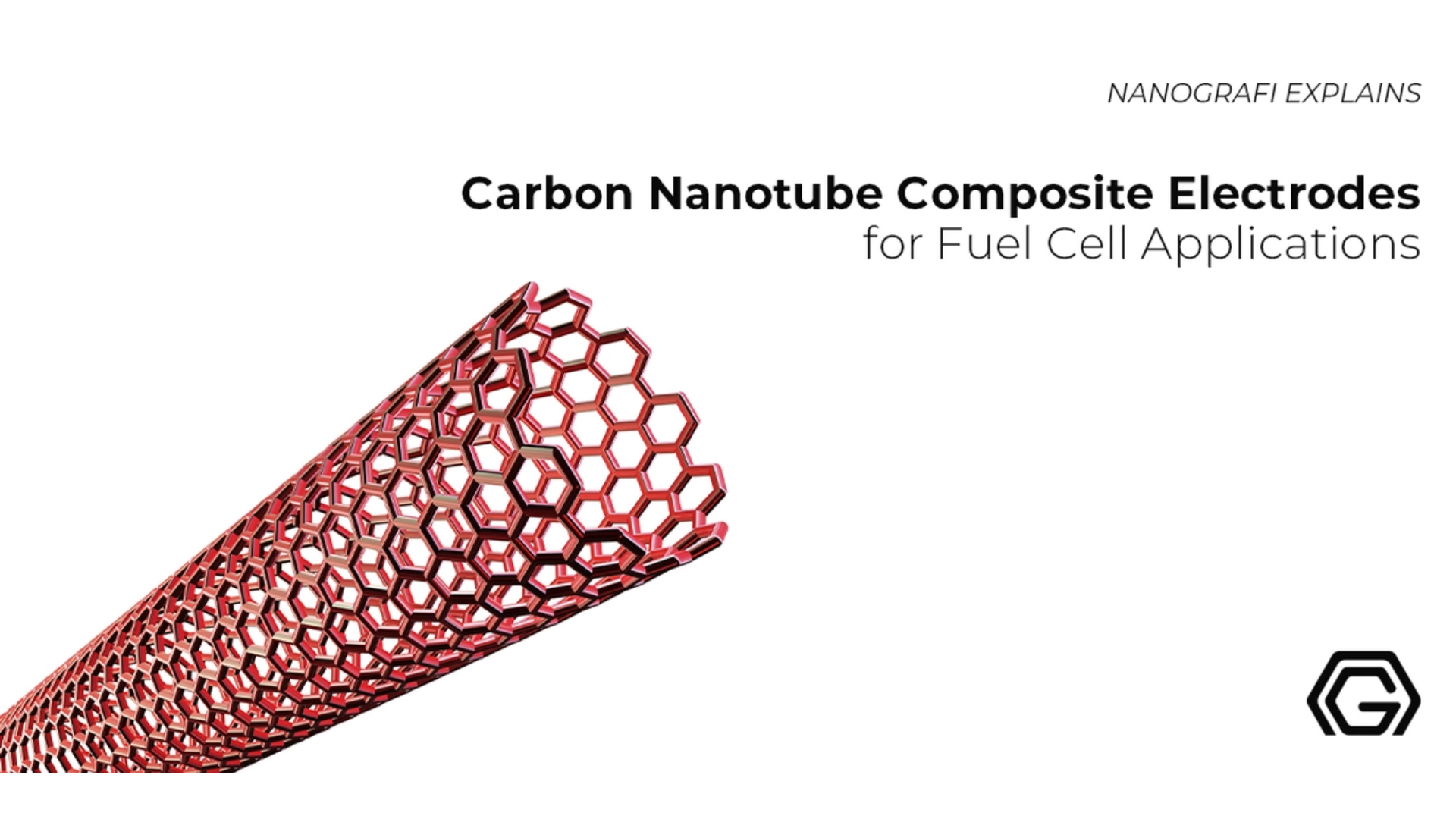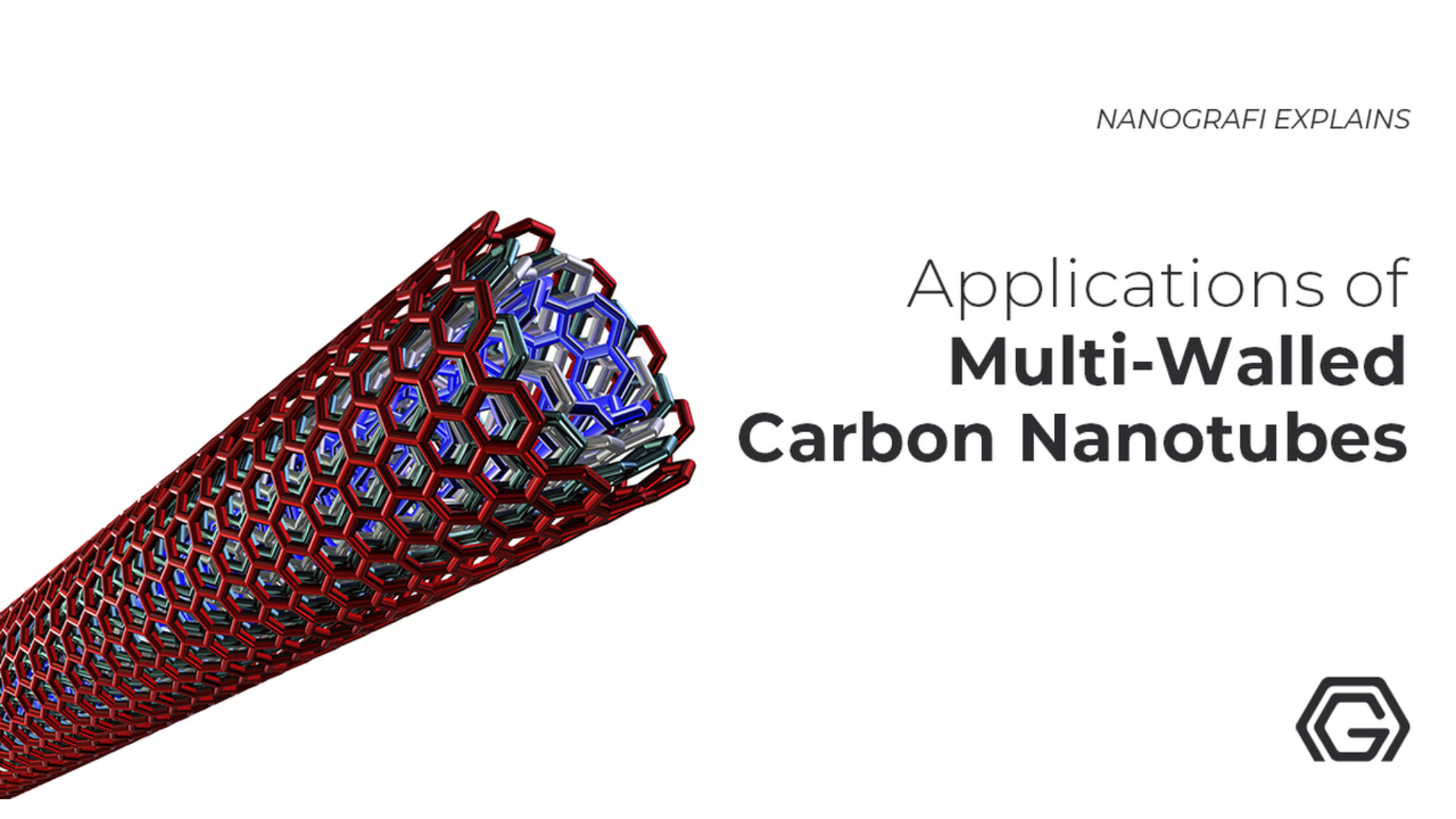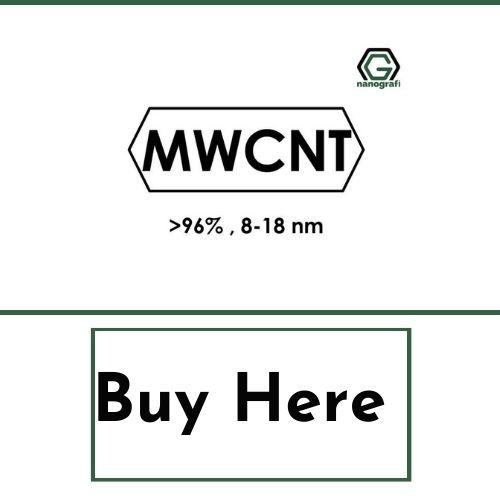Carbon Nanotube and Graphene Applications on Rubber Technologies
Carbon nanotubes are tiny tubes of carbon that are very small in size that they are measured in the form of nanometers. While graphene is the arrangement of carbon atoms in hexagonal lattice’s form. Both carbon nanotubes and graphene have exceptional characteristics and properties which enable them to lead various ways in which they can be modified and used. One of the main fields is the rubber technology in which these two compounds are excessively being used and doing remarkable work.
It is because of the exceptional response that the production and utilization of carbon nanotubes and graphene both has increased rapidly in recent years.
Introduction
Carbon makes up tubes, known as carbon nanotubes whose diameter is usually in nanometers. Most often, they are known as SWCNTs (Single-wall carbon nanotubes) as their diameter is in the nanometer range. In 1991, Bethune et al., Ichihashi, and Iijima discovered them independently in carbon arc chambers which were the same as those that were used for producing fullerenes. One of the carbon's allotropes, single-wall carbon nanotubes are intermediate between flat graphene and fullerene cages.
Bravais Lattice
SWCNTs are ideal as the cutouts from a carbon atoms’ 2-dimensional hexagonal lattice rolled up along hexagonal lattice’s bravais lattice vectors for producing a hollow cylinder. This roll-up vector's length is imposed with the periodic boundary conditions in this construction for producing a helical lattice (seamlessly bonded C-atoms) on the cylinder surface.
MWCNTs (Multi-wall carbon nanotubes)
When nested SWCNTs (single-wall carbon nanotubes) are bounded together weakly in tree ring-like structure by Van der Waals interactions, they are known as MWCNTs (Multi-wall Carbon nanotubes). These tubes are almost identical but are the same as Endo, Koyama, and Oberlin's parallel and long straight carbon layers that are organized cylindrically around a hollow tube. Sometimes, MWCNTs are utilized for being referred to as triple- and double-wall carbon nanotubes. More than often, there are no reports on those carbon nanotube's length who are formed by typical production methods but their length is typically larger than their diameter. Therefore, carbon nanotube's length is assumed to be infinite, and end effects are neglected because of many purposes.
Electrical Conductivity
Excellent electrical conductivity is exhibited by these carbon nanotubes. The chemical modification of carbon nanotube is possible. Carbon nanotubes have remarkable thermal conductivity and tensile strength due to the bonding strength between the carbon atoms and the nanostructure of carbon nanotubes. In many technological areas, these are valuable characteristics. Nanotechnology, composite materials, optics, electronics, and other material science applications are some of those many areas of technology.
Hexagonal Lattice
A hexagonal lattice is rolled up along various directions for producing different SWCNTs of infinite long length that exhibits both translational and helical symmetry along the axis of the tube and nontrivial rotational symmetry is possessed by most of them about their axis. Most of them are chiral, therefore the tube’s mirror image and the tube can’t be superimposed. Due to this construction, a pair of integers can be used to label SWCNTs (single-wall carbon nanotubes). All achiral SWCNTs are moderate or small bandgap semiconductors but a special group of them are metallic. The electrical characteristics of carbon nanotubes are not determined by the rolling of the hexagonal lattice, whether it’s from front to back or back to front, and therefore are the same for the tube’s mirror image and the tube.
Properties of Carbon Nanotubes
Mechanical Properties
When it comes to elastic modulus and tensile strength, the stiffest and strongest materials are carbon nanotubes. This strength is due to the covalent sp2 bonds between the carbon atoms in the carbon nanotubes. According to the experiments performed in 2000, an MWCNT has 63 gigapascals (9,100,000 psi) tensile strength. CNTs are capable of enduring tension of 6,422 kilograms force on a cable with 1 square millimeter cross-section (0.0016 sq in). In 2008, a study was conducted which showed that the strength of 100 gigapascals (15,000,000 psi) is possessed by the individual CNT shells. In comparison with 154 kNmkg−1 of high-carbon steel, carbon nanotubes have 48,000 kNmkg−1 specific strength due to the carbon nanotubes having low density for 1.3 to 1.4 g/cm3 solid.
Electrical Properties
Along the tubular axis, CNTs are semiconducting or metallic in nature unlike graphene as graphene is a 2-dimensional semimetal. For (n,m) nanotube, if n ≠ m and n − m is a multiple of 3, the nanotube is then quasi-metallic with an extremely small band gap; and if n=m, then the nanotube is metallic in nature, or else the nanotube is a moderate semiconductor in nature. Therefore, all nanotubes, etc. are semiconducting and all of the armchair nanotubes (n=m) are metallic. The degenerate point is where the π* [anti-bonding] band encounters the π [bonding] band. CNTs are not semimetallic due to the movement of the degenerate point in the Brillouin zone away from the K point due to the tube surface’s curvature, leading to hybridization between π* and σ* anti-bonding bands, resulting in the modification of the band dispersion.Applications of carbon nanotubes in the rubber industry
For being utilized in technical applications, elastomers have demands. Such demands are increasing more and more, and they are specifically concerned with abrasion and strength characteristics, electrical conductivity, permeation behavior, media stability, heat stability, and friction resistance. Here we are talking about technical applications like sealings or medical applications. The fillers play an important role besides an enhanced crosslinking system beside the other compound ingredients and selecting a suitable polymer. Conventional fillers like silica and carbon black are utilized broadly to reinforce the mechanical and ultimate properties of elastomers. The extent of property improvement depends on the size of the particles, their fractal structure, and surface activity.
Nano-scaled materials on the base of carbon like nanotubes (CNT), graphene platelets, and carbon-nanohorns (CNH) or inorganic types like layered silicates are the fillers with high potentials, which are a result of high aspect ratio morphologies or high specific surfaces and spherical porous. For the used Multi-Wall Carbon Nano Tubes (MWCNTs) of the type NC 7000, the aspect ratio (length/diameter) is in the range of 1.5 µm / 9.5 nm according to suppliers information.
Vulcanization
An increasing CNT concentration resulted in a characteristic change of the curing isotherms. For different types of rubber with CNT and CB filler loading, there are representatives. A significant increase in torque is observed as well as changes in the cross-linking kinetics. The maximum torque difference increased linearly with the amount of CNT. It was observed that CNT showed a higher slope in comparison to carbon black-filled systems. All measured values of Δ-torque are summarized. At CNT loading of 5 vol. %, the values of Δ-torque are 27.0, 20.9, and 10.2 for FKM, NBR, and EPDM systems respectively. The curing time (t90) increased exponentially in CNT-filled nanocomposites above 2 vol. % filler loading. Reasons for this behavior may be a higher thermal conductivity of CNT compounds.
Morphological Characterization of Vulcanizates by Means of TEM
The pure CNTs have a typical morphology, with jammed agglomerates. The TEM images obtained by means of a cryo-preparation technic from the cured FKM- nanocomposites (1.5 phr CNT-Nanocyl 7000) mixed with a variety of mixing speeds with two magnifications as an example for all other systems. The dark particles consist partially of contaminants from sample preparation and mainly of CNT clusters, which can be seen more clearly in the higher magnification of 31,500 x. From the micrographs, it is to conclude that there were few rather small agglomerates that however were not tightly bundled or entangled. A mixing speed of 50 rpm utilizing the laboratory mixer is sufficient for good dispersion. So the results of the interpretation of the mixing curves, as mentioned above, can be confirmed.
Rheological Properties of Uncured Compounds
The Payne effect was investigated utilizing RPA-measurements. The effect is increasing with increasing filler loadings as expected. The storage modulus G' decreases slightly up to 20% amplitudes, demonstrating plateau values, afterward it starts decreasing exponentially with increasing amplitudes. The Payne-effect is higher for CNT than CB at the same fillers loading in all types of investigated nanocomposites base on EPDM, FKM, and NBR. To compare the efficiency of CNT and CB in different types of rubbers, the normalized values of G’filled/G’unfilled at 1% strain amplitude.
FKM-Nanocomposites
In the FKM-nanocomposites CNT as well CB shows a higher reinforcement effect at low strains (filler network) as compared with NBR and EPDM. But for EPDM it is to remark, that the extender oil content is not considered in the calculation of the normalized shear module G'. The slope of the EPDM curves is to be doubled. So the shear modulus G' is slightly higher for the EPDM-systems than for NBR for both CNT and CB at the same effective loading.
To get more information about the uses of carbon nanotubes,
you can read our blog post here.
Stress-Strain Analysis
Tensile tests were performed on crosslinked specimens, obtained from the FKM compounds with CNTs and CB (N990). The incorporation of CNTs into FKM leads to a significant improvement of Young’s modulus and higher stress strength which can be seen to be more pronounced above the percolation threshold. The elongation at break decreased above percolation. This effect is more in CNTs nanocomposites as compared with CB nanocomposites. The reinforcing factor (RF) is defined by the ratio of stress values at 100% strain of filled system to unfilled system.
Swelling and Polymer/Filler Interaction
Equilibrium swelling experiments were performed with vulcanized systems to study polymer/filler interaction. The degree of equilibrium swelling demonstrates a reduction of the swelling capacity of the polymer in presence of CNTs or CB. At the low content of the filler, the main contribution to the swelling is given by the polymer network. With increasing CNTs content, it can be assumed that mechanical interaction between CNTs and polymer chains leads to a CNTs/polymer interface network. This layer is compactly packed and resists more swelling in comparison to the polymer/polymer network. Higher segment density is the result at the CNTs/polymer interface. Because the nanotubes do not exhibit optimum chemical compatibility with the organic polymer, giving rise to physical adsorptions. This observation indicates that in both systems a fraction of the polymer is engaged into an interface strongly adsorbed on the CNT surface.
Graphene
It is a carbon atoms’ layer with a thickness of one atom and it’s organized in a hexagonal lattice. Graphene is graphite's building block (utilized in pencil tips among other things). However, even on its own, graphene is an excellent substance with excellent characteristics which made it earn the 'wonder material' title. In a graphene sheet, each atom is connected by σ-bond to its 3 closest neighbors, and each atom contributes one electron to a conduction band that extends over the complete sheet. In polycyclic aromatic hydrocarbons and CNTs, the bonding is the same as here whereas, in glassy carbon and fullerenes, the bonding is partially similar. It is because of such conduction bands that graphene is a semimetal with such excellent electronic characteristics that can only be explained by the theories for massless relativistic particles.
Charge Carriers
Over a long distance, the charge transport is ballistic. Nonlinear and large diamagnetism, along with large quantum oscillations are displayed by this material. Electricity and heat are very efficiently conducted by graphene along its plane. Light of all wavelengths can be strongly absorbed by this material which explains this material's black color. Although because it being very thin, a single graphene sheet is almost transparent. As compared to the strongest steel of the same thickness, graphene is 100 times stronger.
Properties of Graphene
Physical / Mechanical Properties
Having 0.34 nm diameter, graphene comes in the list of the world's thinnest material with over 1 Tpa tensile strength. Graphene only has a weight of 0.77 mg per sq. meter, therefore it is light. As compared to all materials, the surface area of graphene is the highest as it is a single two-dimensional sheet. Graphite is formed when graphene sheets are left to themselves and they stack upon each other. Under normal conditions, graphite is carbon’s most stable three-dimensional form. The most stretchable crystal is graphene and its sheets are flexible. The perfect graphene is extremely impermeable, making it impossible for even the helium atoms to go through it.
Chemical Properties
Despite all of the atoms of graphene being exposed to the environment, graphene doesn't form a reaction with other atoms and it is an inert material. Various molecules and atoms can be absorbed by graphene which can result in changes in electrical characteristics, which can later be utilized for producing sensors or other applications. Different chemical groups can be used to functionalize graphene, leading to the formation of various materials like fluorinated graphene (if functionalized with fluorine) or graphene oxide (if functionalized with helium and oxygen).
Electronic Properties
The intrinsic mobility of graphene is 100 times more than silicon and its electrical current density is a million times higher than that of copper. As compared to any of the known materials, including silver, a lower resistivity is displayed by graphene at room temperature. It can be turned into a superconductor by utilizing some methods as it can efficiently carry electricity with 100% efficiency. Graphene can’t be utilized for making transistors as it does not have a bandgap. Existing bandgaps and even those under development can be opened by various methods.
Applications of Graphene on Rubber Technology
In various fields like civil applications, biomedical applications, aerospace exploration, vehicle engineering, and so on, rubbers are broadly utilized. Although, poor mechanical characteristics are usually displayed by the unfilled rubbers. Therefore, the rubbers must be reinforced with different fillers like clay, silica, and carbon black. Rubber’s toughness, elongation at break, tensile strength, and modulus can be easily tuned by it with these fillers for various applications. Rubber products with some enhanced functions and extremely high mechanical performances are required for the fast development of advanced technologies. Graphene is very much desired for novel nanomaterials, as it confers the rubber with new functions and also reinforces it. A huge amount of attention has been gained by graphene in the last decade in the field of physics and materials.
Interface Interaction
In order to enhance GE’s interfacial interaction with the rubber matrix, one of the most versatile methods to be ever used is GE’s surface modification. Also, interfacial interaction largely determines the dispersion state. Numerous chemical reagents like orthoquinone-thiol chemistry, polyvinyl alcohol, and amino acids, have been utilized for the modification of GO which eventually results in improved interfacial interaction.
Mechanical Reinforcement
Without reinforcement, most rubber applications can’t happen because of crosslinked rubbers having less elongation and tensile strength. Diene rubbers are typically reinforced with silica, carbon black, and other fillers which can make a filler network via agglomerates which upon deformation with energy dissipation, can undergo agglomeration and reversible breakdown. Although, the loading of silica and carbon black usually crosses 30 phr for forming a percolated filler network, which decreases the elongation highly because of the stress concentration and strain amplification effect at the agglomerates.Hybridization:
According to the latest discovery, filler networks can be more efficiently produced by nanofillers, particularly hybridizing GE with carbon nanotubes.GE/CNT hybrid is enabled by the compact filler network for having synergistic effects in enhancing polymer nanocomposite’s thermal stability, electrical conductivity, and mechanical strength. Still, research needs to be done on the hybrid filler network’s potential energy dissipation ability and its toughening effects on rubbers.
Anti-aging Property
Diolefin elastomers like styrene-butadiene rubber (SBR) and natural rubber (NR) undergo thermal oxidation easily, leading to the production of oxygenic groups and extra crosslinks, and scission of polymer chains because of the instability of active allylic hydrogens and unsaturated double bonds. Mechanical properties will dramatically reduce with the aging process, therefore resulting in earlier failure and decreased reliability of the rubber products and that's why antioxidants are commonly used for capturing the free radicals that the oxidation generates. Although, there are many volatile additives with low anti-aging efficiency. There are few chemical methods for increasing anti-aging performance but because of their complex process, the methods don't reach the industrial level.
Nanofilters
Free radicals can be scavenged from thermal oxidation by nanofillers like carbon nanotubes and fullerene via high electron affinity whereas nano-clays and other layer-like nanofillers form barriers for preventing the volatile decomposed products from outward diffusion and oxygen’s inward diffusion. Graphene has a thickness of one atom and it can serve as gas barriers and also scavenging free radicals, making graphene more efficient in enhancing the thermal stability of graphene/elastomer nanocomposites.
To get more information about the applications of carbon nanotubes,
you can read our blog post here.
Heat Insulation
Some graphene-based aerogels have special functions and have gained a huge amount of attention in past years. For instance, if we freeze-cast a suspension of sepiolite nanorods, the cellulose nanofibers, and graphene oxide, it can reduce the thermal conductivity to 15 mW m−1 K−1. However, no shape-memory characteristics are displayed by aerogels of this kind, which prevents them from being applied in the small and irregular area.
Functional Groups
GO reacts with the triblock polymer’s functional groups, thereby producing a second network. A physical network is formed by the triblock copolymer itself after eliminating the solvent through the phase separation between the soft and hard blocks (third network). It was seen that on deformation, the 1st network can function as sacrificial bonds for dissipating energy, which leads to aerogel’s high mechanical performance. It is because of the second network that the aerogels can remember their original shape because of their elastic nature whereas the 3rd network is utilized for storing the strain energy and using vitrification for fixing the aerogels in a temporary shape. Aerogels have extremely low thermal conductivity, and such aerogels have good potential in thermal insulating applications.
Conclusion
Carbon nanotubes and graphene are rapidly being used in rubber technology because of the remarkability that these bring to the market through their excellent properties and characteristics. After all the researches that have been carried out in this regard, their productivity has also increased as to take better and more benefits from the said products.
To get more information, you can visit Blografi.
References
https://www.sciencedirect.com/science/article/pii/S2542504818300393
https://www.researchgate.net/publication/319634148_Graphene-Rubber_Nanocomposites_Preparation_Structure_and_Properties
https://www.graphene-info.com/graphene-introduction
https://www.azonano.com/article.aspx?ArticleID=5656
https://pdf.sciencedirectassets.com/271345/1-s2.0-S0144861715X00208/1-s2.0-S0144861715012205/Jie_Cao_cellulose_nanocrystals_2015.pdf?X-Amz-Security-
https://cutt.ly/tJIntRs
Recent Posts
-
Advanced Materials for Unmanned Aerial Vehicle (UAV) Protection Against Laser
Consider a UAV on a critical mission, rendered inoperative by a sudden laser attack. With the increa …26th Jul 2024 -
Simulation and Modeling of Material Properties
Our world is composed of a dazzling array of materials, each with its own unique properties that dic …19th Jul 2024 -
Advanced Coatings for Superior Corrosion and Wear Resistance
Corrosion and wear pose significant challenges across various industries, leading to substantial eco …12th Jul 2024








